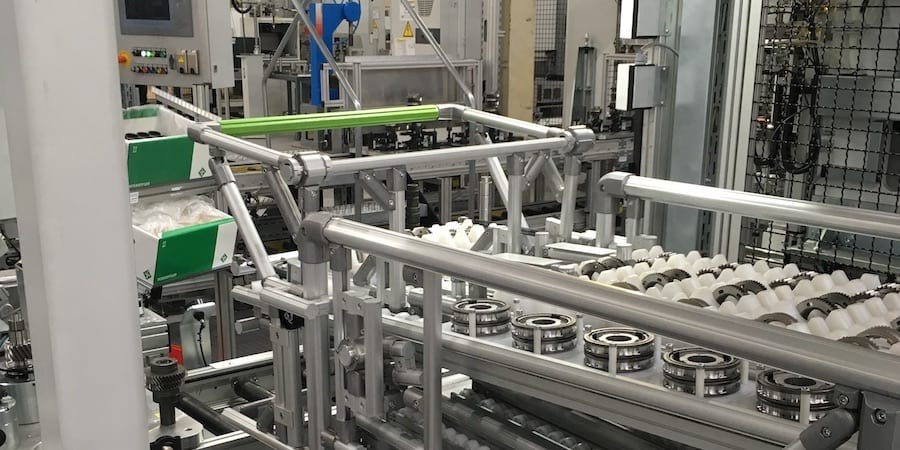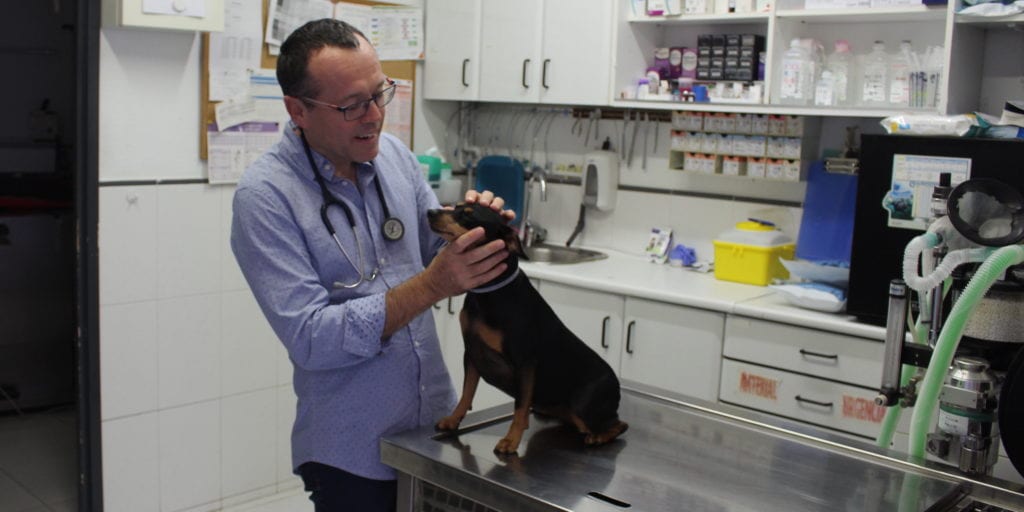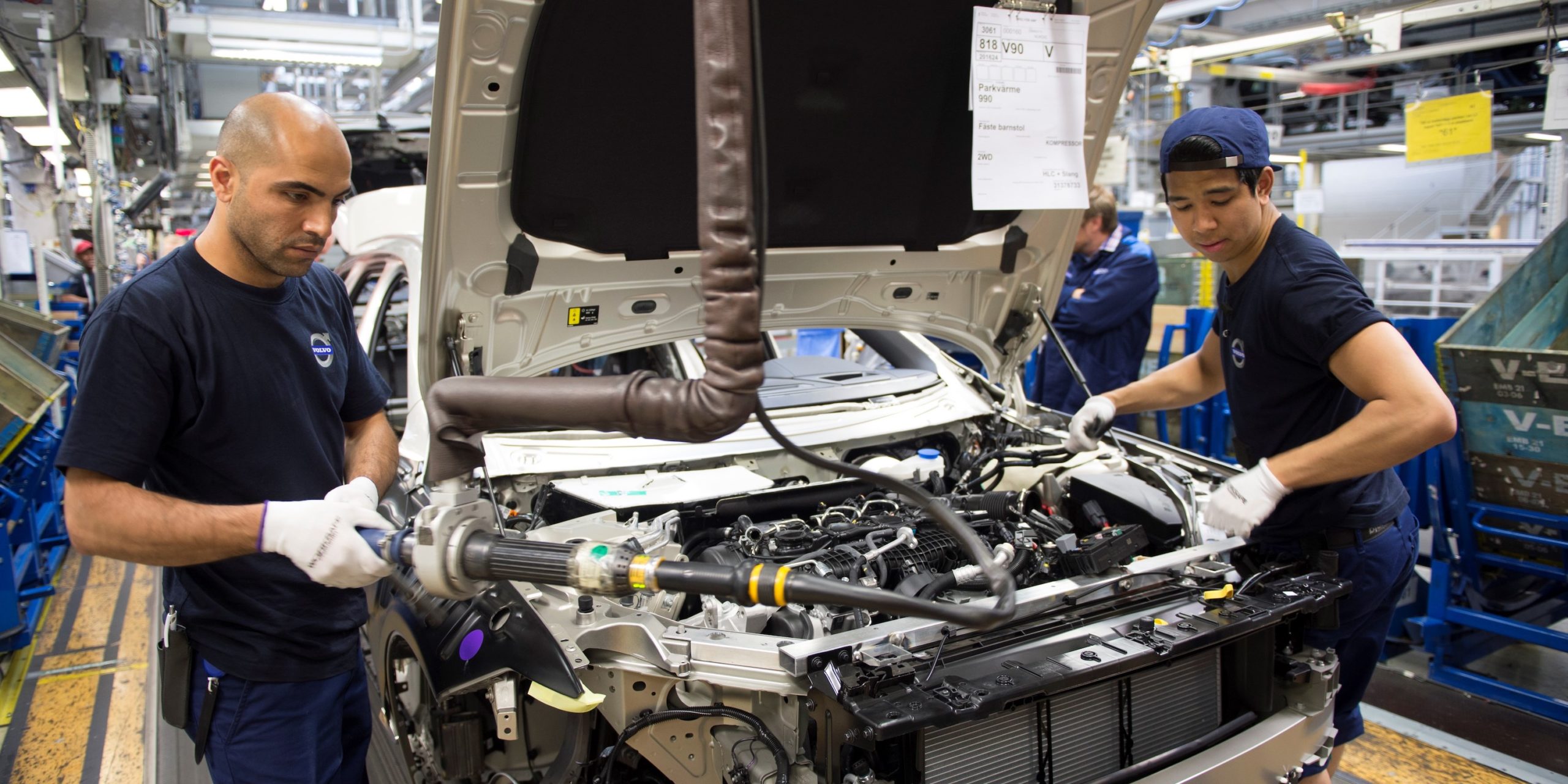
Here is the proof that kaizen leads to real innovation
NOTES FROM THE GEMBA – If you need proof that kaizen leads to real innovation, look no further than AIO. This French Tech company that reinvented itself as a karakuri kaizen coach.
Words: Catherine Chabiron, lean coach and member of Institut Lean France
“Ever heard of karakuri dolls?” Cyril Dané asks, as we enter AIO’s premises. “It is an ancient tradition in Japan, dating back to 17th century: automata in the shape of dolls were used to hand out tea to guests. They were set in motion by a built-in mechanism triggered by the weight of the tea cup being placed on the doll’s tray.”
Cyril is the CEO of AIO, a small but growing company located near Bordeaux, in France, a typical example of French Tech. As we stand in his meeting room/office, which is designed for stand up meetings, Cyril (who stands throughout our discussion) explains that the whole point of karakuri mechanisms is that they require no water, electricity or compressed air, but move using gravity, spring releases and other such devices.
What, you might ask, do 17th-century Japanese automats and French Tech have in common? Well, sustainable development challenges have pushed a number of industries to revisit the karakuri concept over time, think of ways to move bins or boxes next to the assembly lines without any power consumption (at Toyota, the move to tools and equipment in Assembly not requiring compressed air dates back to 2007), and solve ergonomic issues for operators in the process.
Indeed, if you want to reduce the consumption of natural resources in your business, you will naturally turn to karakuri to assist you along the assembly lines or during picking operations.
Just seven years ago, Cyril and AIO were in the equipment-trading business. However, Cyril wanted a change and, when he heard of the Karakuri Kaizen Exhibition hosted by the Japan Institute for Plant Maintenance (JIPM), he decided to go. He loved the concept, and ended up changing his line of business to the engineering, development and production of karakuri features.
His first major breakthrough came when AIO started to supply karakuri products to Toyota. By 2012, the turnover of the company had increased by +100% in just six years.
But there is more to it, Cyril explains. The idea of karakuri kaizen is not only to develop mechanical equipment to improve ergonomics on the production line and to reduce natural resource consumption; its use is also being promoted within Toyota and by the JIPM as a form of kaizen along the production line. The annual Karakuri Kaizen Exhibition is actually a plant competition, where plant operators present and demonstrate their own ingenious karakuri devices. Providers and trainers are merely allowed as visitors. “We actually talk of karakuri kaizen,” says Cyril, “And this has progressively transformed our work: from device provider, we have started to develop as karakuri coaches inside the plants”.
As we walk through the AIO workshop, Cyril points out the different devices and solutions they have designed. Most are customized solutions, designed from scratch for each environment and need, even if the mechanisms are standard. And, not surprisingly, kaizen within AIO is driven by pulled flows, and quality by jidoka. As assembly goes on, an andon can be triggered both to alert workshop team leaders but also the Engineering Department (should a design issue be detected that might prevent assembly). “The shop floor sometimes complains that Engineering can take up to five minutes to answer their call for help, in spite of their immediate proximity to the shop,” Cyril explains with a smile. “It seems we have not yet fully grasped the concept of stopping the line”.

Pulled flows are also being tested in Sales, where kanban cards in the launchers show where the work is stuck and which requests for bids threaten to move past their deadlines. And, by the way, this is another demonstration of the long exposure of Cyril to Toyota: the cards have barcodes, that are scanned when moving from one area of work in Sales to the next. Lead-time is consequently tracked against each initial customer request, and made visible so that action can be taken whenever necessary. This is the quintessence of pulled flows: accelerate flows for the customer and make abnormal waiting obvious.
Beyond the use of lean tools, what Cyril is trying to achieve, in his team and for himself, is the ability to “learn to learn”. As we move into the Engineering office, this idea is visible everywhere. Here, teams meet every day to discuss a technical point mastered by one of them and to share the newly acquired know-how. I can see six point kaizens here and there on the walls, and a team leader shows me how they track time on a daily basis: not, as you would expect in Engineering, through the usual time assignment to deliverables, but the comparison between what they had planned to do, task by task, and what actually happened. This meticulous approach to monitoring each task has only one objective: think about what went wrong and learn from it (see a similar approach in Theodo in this Planet Lean article). What Cyril checks, as we pore over the sheets, is the comments. Why am I late? Where did I get stuck? Can I improve this?
This is where you can really perceive how different a lean organization committed to learning is. In a traditional environment, problems may be seen (customers may even take the time to point them out) and, if they are not ignored (I just had a conversation with a Quality manager who desperately seeks to involve the Sales Director in the solving of their customer claims and can hardly corner him once a month to discuss the subject), action will be taken. Management will put pressure on people to restore the original level of quality, provide the right product or reboot the server, before moving on to other fires, happy they have “put things back on track”. But how many encourage teams to go beyond the rework? How many ask them to sit down and think about what was missed, what needs to be learned?
Despite running a lean organization, Cyril is adamant about the limits of AIO: “We are very keen on producing something that works, but we are not obsessed enough with high levels of quality. We are working on it, as we need to achieve a balance between performance and quality.” He then shows me a recent axis added to their performance assessment of the product: is the device we are offering intuitive enough? After all, karakuri kaizen is expected to reduce both the physical and cognitive workload of the operator. It’s more than just ergonomics; it needs to be user-friendly.
“Let me tell you how Toyota coaches on karakuri kaizen,” Cyril tell me. “They bring the team members into a karakuri dojo for a week. They are given boards, a tennis ball, string and nails and a bottle that can be filled with water, and are requested to develop a mechanism that will cause the tennis ball to roll down from point A to point B. This is done by teams of two and, at the end, the devices are displayed in a room so that newly-trained teams can see them. But the training stops there. Toyota expects you to think by yourself how to apply this newly acquired competence to your immediate environment, not to copy and paste what others have done. Typical kaizen.”

And indeed, AIO teams started to engage in lean thinking on their own, too. Initially, they saw themselves as karakuri equipment designers and producers (an example of French Fab, an expression common in France to showcase modern French industry); however, as they designed and implemented devices and trained the people inside their customers’ sites (Cyril says they have visited over 2,000 plants in Europe), they started to have strange conversations with the customers, less focused on karakuri and more on kaizen. AIO’s leanest customers started telling them that they could provide the devices but that the teams on the lines were the ones best placed to think about and build the karakuri equipment, not an external provider. Karakuri, they said, cannot be separated from kaizen, and kaizen cannot be brought in from the ouside any more than lean can.
Why should this producer and coach of karakuri kaizen deserve the label “French Tech” mentioned earlier? Because their story shows how kaizen leads to real innovation – the very reason why I have come to visit Cyril, who is just back from the January 2018 edition of the CES [the world’s main gathering point for consumer technology companies and enthusiasts] in Las Vegas. AIO’s conversations with their lean customers sparked new thinking in the company on how to become a karakuri coach, rather than a karakuri designer, while triggering a new angle for the company’s long-term vision. Could they use what they had learned along the assembly lines and in picking supermarkets to offer a new service to their customers? Could they help them to better understand, through data and digital tools, what the physical and cognitive workload are on a given workstation, so as to enable kaizen on the line?
This way of thinking led AIO to create a product called Numii, a user-friendly recorder of gestures and movements at the workstation that highlights those creating efforts and pain.
The product is still in its early stages, even though it has already evolved a lot in terms of looks, size and ergonomics. AIO’s lean sensei has pushed them to develop modules, while looking at many options in parallel for each of those (mechanics, computer, batteries – Numii stands alone and doesn’t require a plug, sensors or an electronic card).
During my visit, the young engineers working on Numii offer me a live demo and take me through their work area, which shows some obvious signs of intense collaboration: walls of design options, key deadline tracking (including with external partners), expectations from each Proof of Concept, all of them handwritten and developed through stand-up meetings. Cyril confirms the three objectives they seek are: 1) learn from close observation and measurement at the workstation how a given person manages her work and identify any signs of excessive effort or degradation over time; 2) highlight the risks at a given workstation for a person who is not well suited for the work and offer kaizen opportunities from different gesture options collected by Numii; and 3) provide free and anonymous data to hospitals to pursue research on professional diseases.
Digital data is poor on the subject, and AIO plans to insert the data collected by Numii, through artificial intelligence, into a database of standard gestures, with associated efforts and risks.
Is this concept new? Surely not, ergonomics has been at it for a long time. Athletes also know that fluid movements are extremely efficient and, critically, effortless. Toyota had invented the concept of motion kaizen on small movements when we in the rest of the world were still wondering how to optimize the lay-out of our plants (read this very interesting report from Tracey Richardson on the subject). Numii aims to tap into the potential of digital recording and analysis and the power of big data, with all the risks that this entails (from the wrong usage of the data to drowning in numbers, from not knowing what to make of that information to regular measurements spitting out Pareto graphs on the manager’s desks, rather than fostering kaizen at the gemba supported by dedicated measurement of the problem).
Will Numii be a success? It’s too early to say – which is true for any innovation – even though the Las Vegas CES event ended with several requests for TV demos and enquiries from potential customers.
“I have learned my lesson,” Cyril concludes. “You don’t develop an idea out of the blue or just because you like the concept. You need a customer, a beta tester. Thousands of hours of karakuri kaizen eventually showed us an area in which we can add value to manual work, but we developed the concept with a beta tester customer. The first trials taught us one thing immediately: the product would be a no-go with sensors on the operator’s body. So, we switched to external sensors to reduce stress, inconvenience and prevent hygiene issues.”
As AIO’s story shows, kaizen has a direct correlation with innovation.
This article is also available in Polish - to read it, please click here
THE AUTHOR

Read more


INTERVIEW – A 22-people veterinarian hospital in Barcelona has recently turned to lean thinking. We caught up with the owner to learn how things have changed six months into the journey.


CASE STUDY – What is the approach to people development used at Volvo Cars? The authors explain how the organization has created a production system fully owned by operators and managers.


FEATURE – This powerful article explains why we should place learning at the heart of our lean strategy to build better products – something Toyota has always done – and how management fits in the picture.


FEATURE – In a transformation, should we spread responsibilities across the business or go for a centralized Lean Office? For their second piece, our Polish colleagues look at what they have learned on the field.

